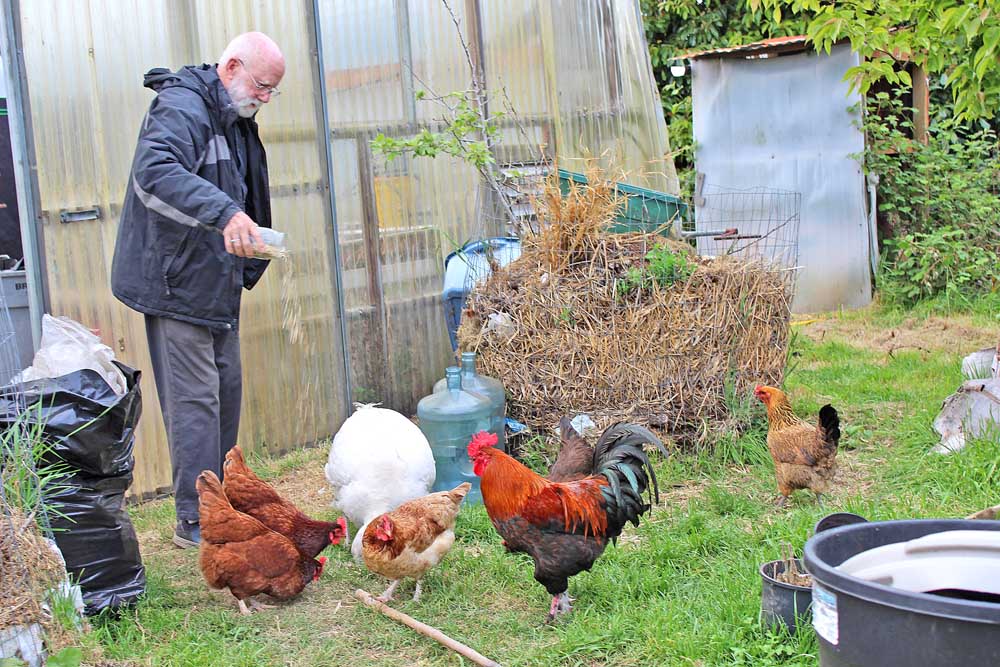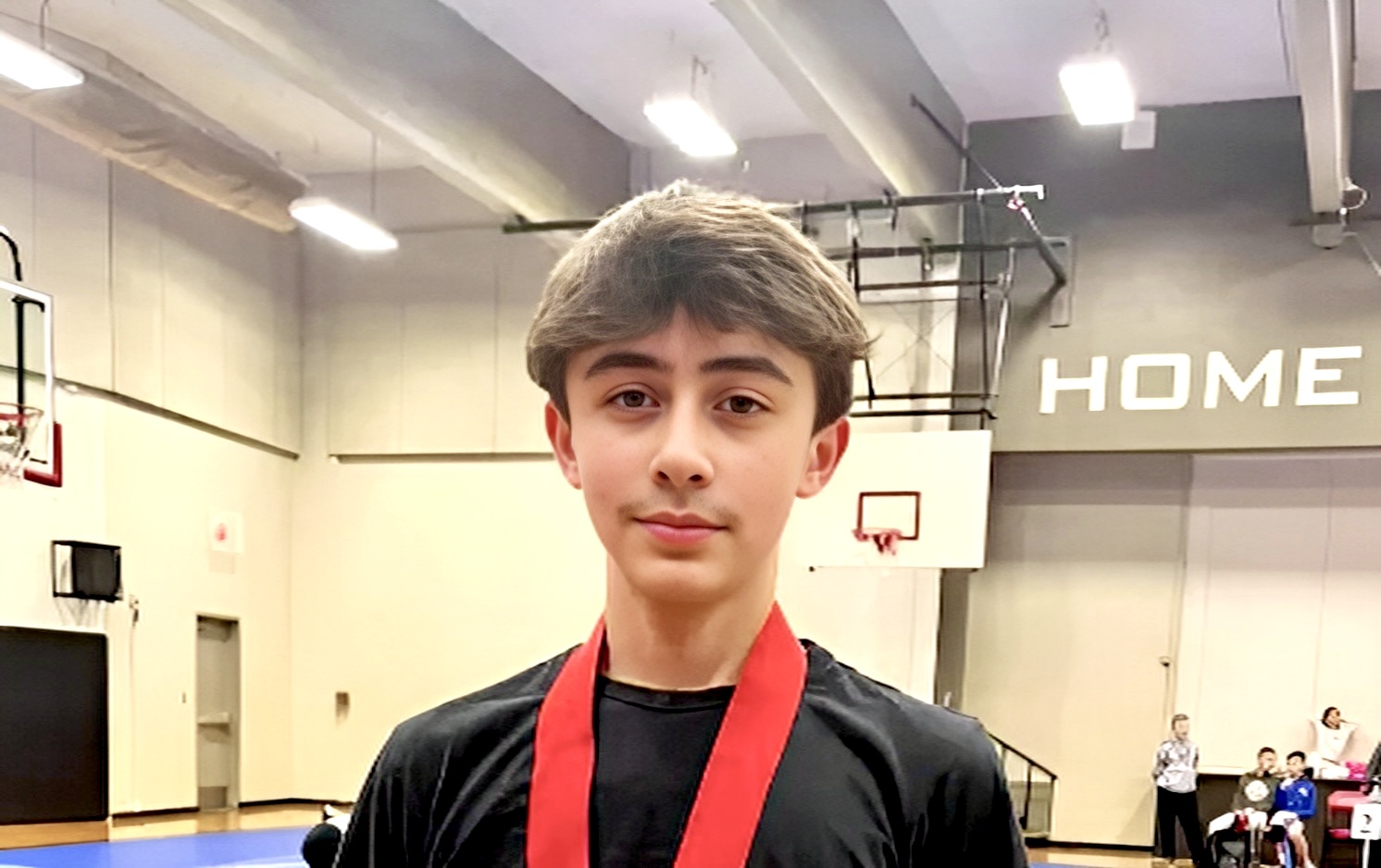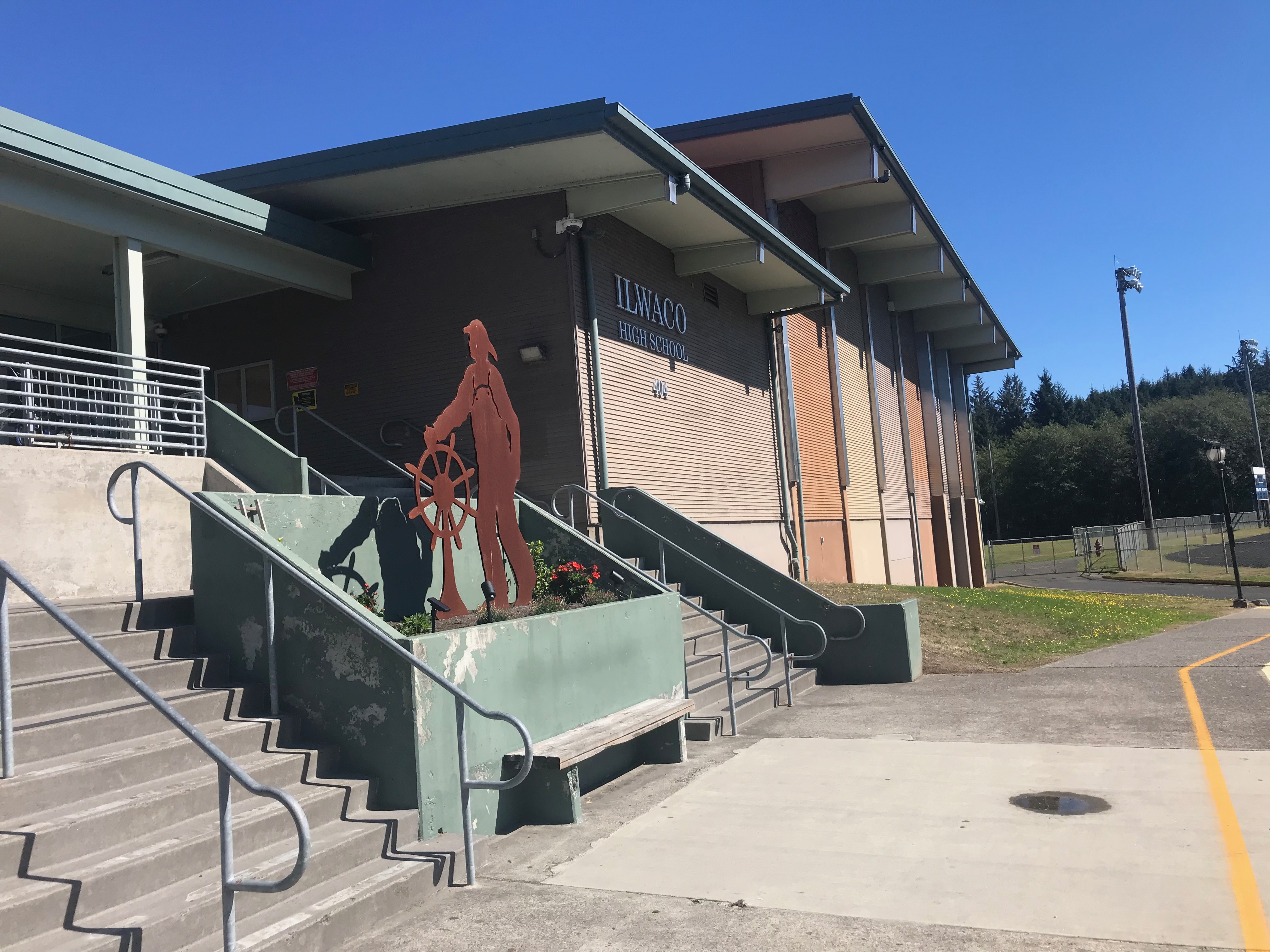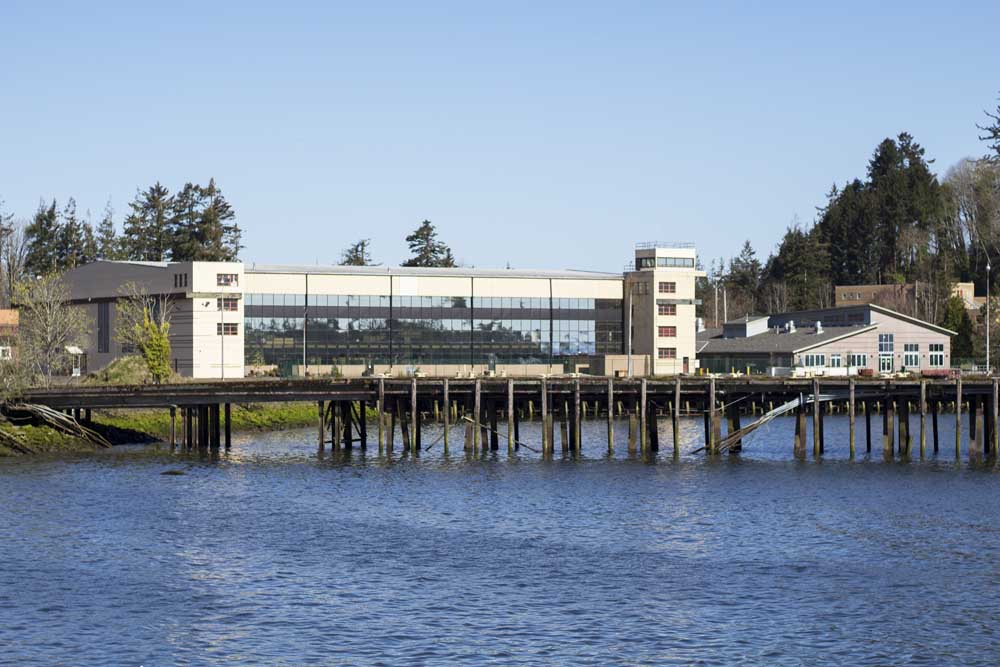Larkin Stentz uses music to help others find ‘sanctuary’
Published 8:46 am Monday, May 13, 2019

- Larkin Stentz breaks off from a discussion about music and philosophy to feed the chickens on his small Long Beach farm. In seven decades he has journeyed through life seeking to find meaning, while entertaining audiences with music and caring for the natural landscape.
7 p.m. Friday, May 24
Peninsula Arts Center, 504 Pacific Ave. N, Long Beach
CD sales and signing
9 a.m. to noon, Saturday, May 25
Abbracci Coffee Bar, 408 Pacific Ave., Long Beach
More details at www.larkinsmusic.com
LONG BEACH — When he plays his bamboo flute, it almost seems a part of him.
When he curls his 70-year-old frame around the hammered dulcimer, his concentration is almost trance-like.
Larkin Stentz is on a mission to fulfill what an inspirational author once called “sacred contracts.”
“Music is the reason I came to Planet Earth,” he says. “I believe that we reincarnate to Planet Earth for certain tasks, bringing certain experiences.”
Stentz is a 25-year resident of the Long Beach Peninsula, a musician known equally well for his business, Green Angel Gardening.
He has just recorded his 12th music album, a meditative CD featuring nine of his own compositions, one improvisational flute piece, and a low-key cover of “Amazing Grace.”
‘I am having almost a conversation with the listener.’
— Larkin Stentz
Long Beach composer and performer
The CD features Stentz playing the silver flute, a bamboo flute also called a bansuri, a hammered dulcimer, known as a santur, a synthesizer and a kayna, a South American whistle. One track blends in a recording of ocean waves. “It’s supposed to be like a symphony,” he says.
“Sanctuary,” its title, alludes to what he describes as each person’s inner spiritual core.
“We all have a place within us where we know we are at peace with our surroundings, our own ‘sanctuary space,’” Stentz says. “I want to nourish that within the listener. When you are in our ‘sanctuary space,’ you are responding from your true self — from the sacred place of light that is you.”
Why the flute?
Born in Oklahoma, with a stint in Midland, Texas, where his father worked in oil, Stentz spent most of his teenage years in Redondo Beach, California. The soundtrack of his childhood included his mother playing piano and his father’s liking for jazz. Playing the accordion for six years as a boy plus singing in church choirs contributed to his musical foundation, though he said the trauma of his mother’s death when he was 16 wiped many memories.
A pivotal moment happened while studying at the University of Santa Barbara during the American war in Vietnam. He wrote a conscientious objector thesis. “I had to prove what I believed — at age 18,” he recalls. “It was a perfect way to solidify within myself what I believed.”
Rejecting the demand to join the military offered three choices, jail, escape to Canada or a medical exemption; the latter was his saving grace: A diagnosis of hypoglycemia led an induction officer to conclude he would faint if fed C-rations. “I have a way of taking things to the edge in my life,” Stentz smiles.
In his freshman year, he first picked up a flute. He liked the sound, having always enjoyed whistling.
During that era, Ian Anderson, leader of the 1970s progressive rock band Jethro Tull, had added the instrument to create a distinctive sound.
Stentz acknowledged the British band’s popularity, but deliberately took his own flute in a softer direction. “I could get tone quality immediately,” he says, unpacking his instrument from its thin oblong box and cradling it reverentially. “It was 10 years of learning, one note at a time.”
Echoes
In subsequent years, Stentz recorded 11 albums. “To the Essence of a Candle,” was released in 1978 when New Age was not an abundant shelf in the record store. “O’cean (a play on “oh-see-on”), was released in 1980. It featured an attempt to synchronize the movements of a dancer with Stentz playing his flute, coupled with the sounds of the ocean and humpback whales.
Others have titles like “Stairway to Emptiness,” designed to accompany meditation after yoga, and a collaborative work, “Earthlight,” which he once described as mystical meditations close to an “Earth symphony.”
Another, “Blossom in the Storm, was recorded in a 300-year-old cloister in Holland, including one track in tribute to Andrei Sakharov, the dissident Russian physicist who earned the Nobel Peace Price in 1975 for battling nuclear weapons. Closer to home, Stentz made a CD in 2014 to raise money for the Astoria Column — recording pieces amid the eerie echoes of its winding staircase.
Sustainable
Stentz spent three years teaching sustainable agriculture in Mexico before moving to the Peninsula 25 years ago; his wife, Michele, died 20 years ago.
His landscaping business has been a fixture since he arrived; some years ago, he started a sustainable living training center, bringing 125 students from all over the world to study and work. Two decades of elementary school children have visited his home base on the bottom end of Sandridge Road to learn about small-scale farm life.
Today, he lives there in a 10 feet by 12 feet cabin dwarfed by two sturdy greenhouses. His daughter, Terralar Lee, and two grandsons have joined him.
World travels and a blend of beliefs are reflected in his cramped decor. The walls of his simple but cluttered solo abode include Native American blankets, one with a Central American two-headed deer symbol, and another a gift from the late Ian Player, a South African conservationist (and brother of golfer Gary). Inevitably, there is an angel mounted on the wall and pictures that evoke the peaceful simplicity of the Dalai Lama’s teachings, which Stentz cherishes.
Present
The musician views concerts as two-way communication.
“Sometimes I get the audience to sing a note,” he says, with evident joy at that connection. “It’s being ‘present,’ in the moment, like meditation practice.”
The approach reflects the mystic teachings of American yogi Ram Dass, whose 1971 book, “Be Here Now” developed a generation of adherents and inspired a George Harrison song.
“Being present, right now,” Stentz says. “If I can start with one note, then round out or fade out.”
Stentz draws, too, on German writer Martin Buber’s 1923 work “I and Thou,” whose core premise explains ways relationships are the key to humanity.
On more than one track of his new CD you can hear him breathing. Recording engineers intentionally retained that sound. “My breath?” he says, when queried. “It is connecting to my humanness. I am having almost a conversation with the listener.”
‘Captivated’
The title was dreamed up during an after-dinner word game with friends, including Katelyn Staecker of Astoria. “I knew immediately that was the name of my album,” Stentz recalls. “That was January 2018. It slowly percolated.”
Recordings were made at the Netel Grange and the McVarish Gallery in Astoria and the Peninsula Arts Center in Long Beach.
Another was at a live concert at KALA in Astoria last November. The music was especially evocative for Beth Bauer, who wrote about him on the www.clatsopnews.com website.
“As I watched Larkin play his wooden flute, I was mesmerized by the blissful sounds filling the air,” wrote Bauer, whose mother was a more traditional flute player. “My soul soared to a place far beyond the heavens, and I was captivated by every note.”
Love
Stentz venerates the work of author Carolyn Myss, whose 2001 book “Sacred Contracts” incorporates thoughts from Plato and Jung, and traces the journeys of historical figures identified as prophets, while encouraging her readers to tap into their potential.
He says he tries to exemplify that.
“If I have high hopes for any music that I play, it is to touch or have a conversation or dance with a listener from their heart,” he says.
“The planet desperately wants and needs us to be in a sanctuary with ourselves, so then we can vibrate a feeling of love. We need more love vibrations on Planet Earth.”





